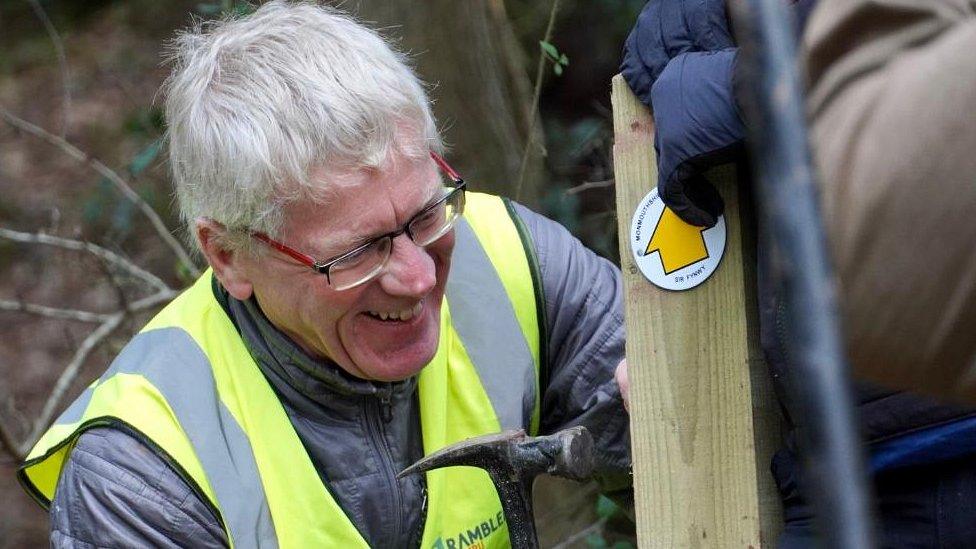Headache over access and security at railway station
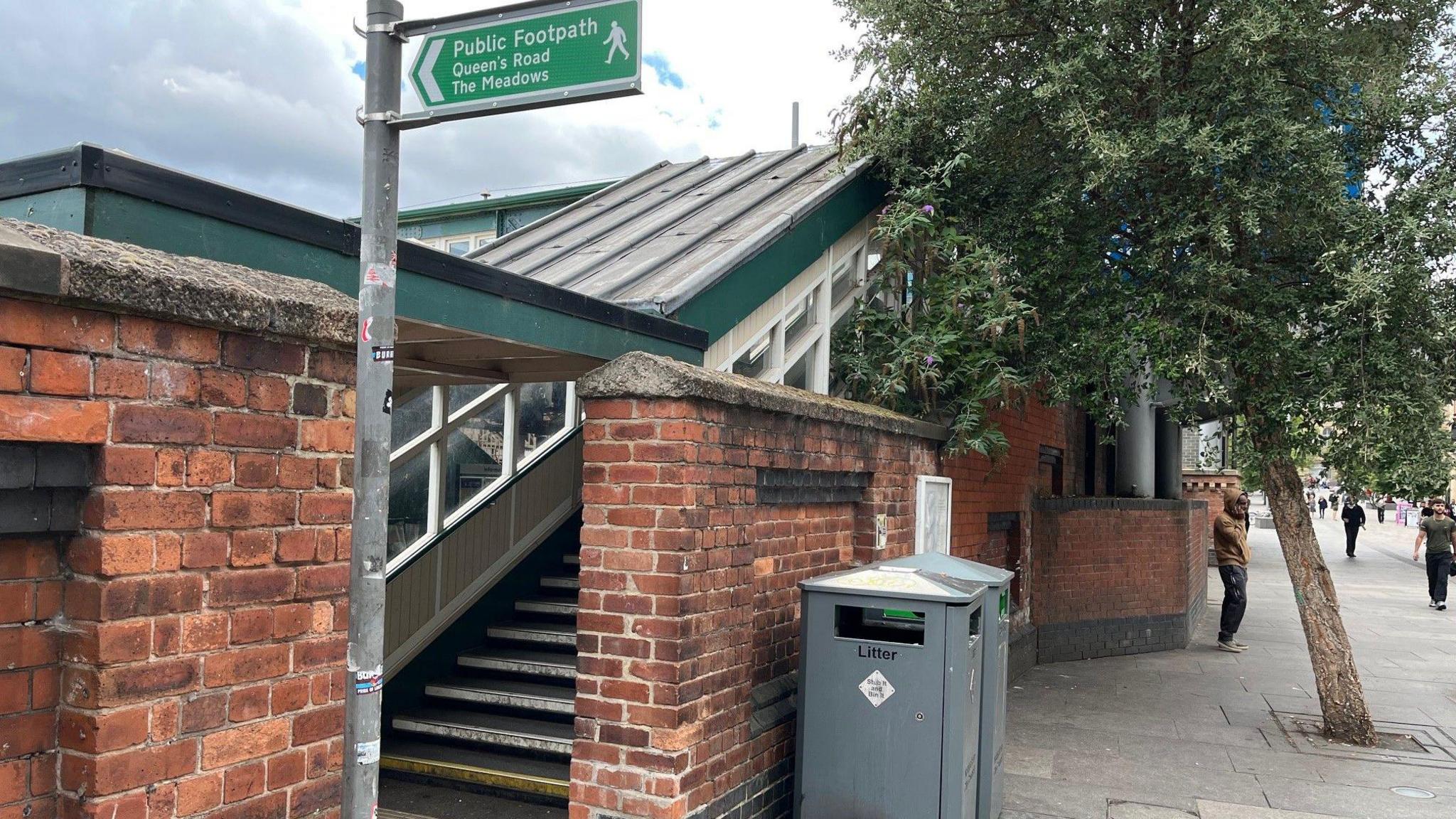
The footpath runs from one street, over the station and down to a parallel road
- Published
A "unique" bridge at Nottingham station is causing train operator East Midlands Railway (EMR) an ongoing headache and its workaround is attracting criticism - but why?
The bridge carries a legally-protected right of way from Station Street to Queens Road on either side of the rail tracks - but it also gives access to all platforms.
EMR has linked the route to anti-social behaviour and fare evasion and has been trialling overnight restrictions on people using it to get to trains.
The operator is now set to increase the times when stairs to platforms are fenced off but rail passengers say the problems lie elsewhere.
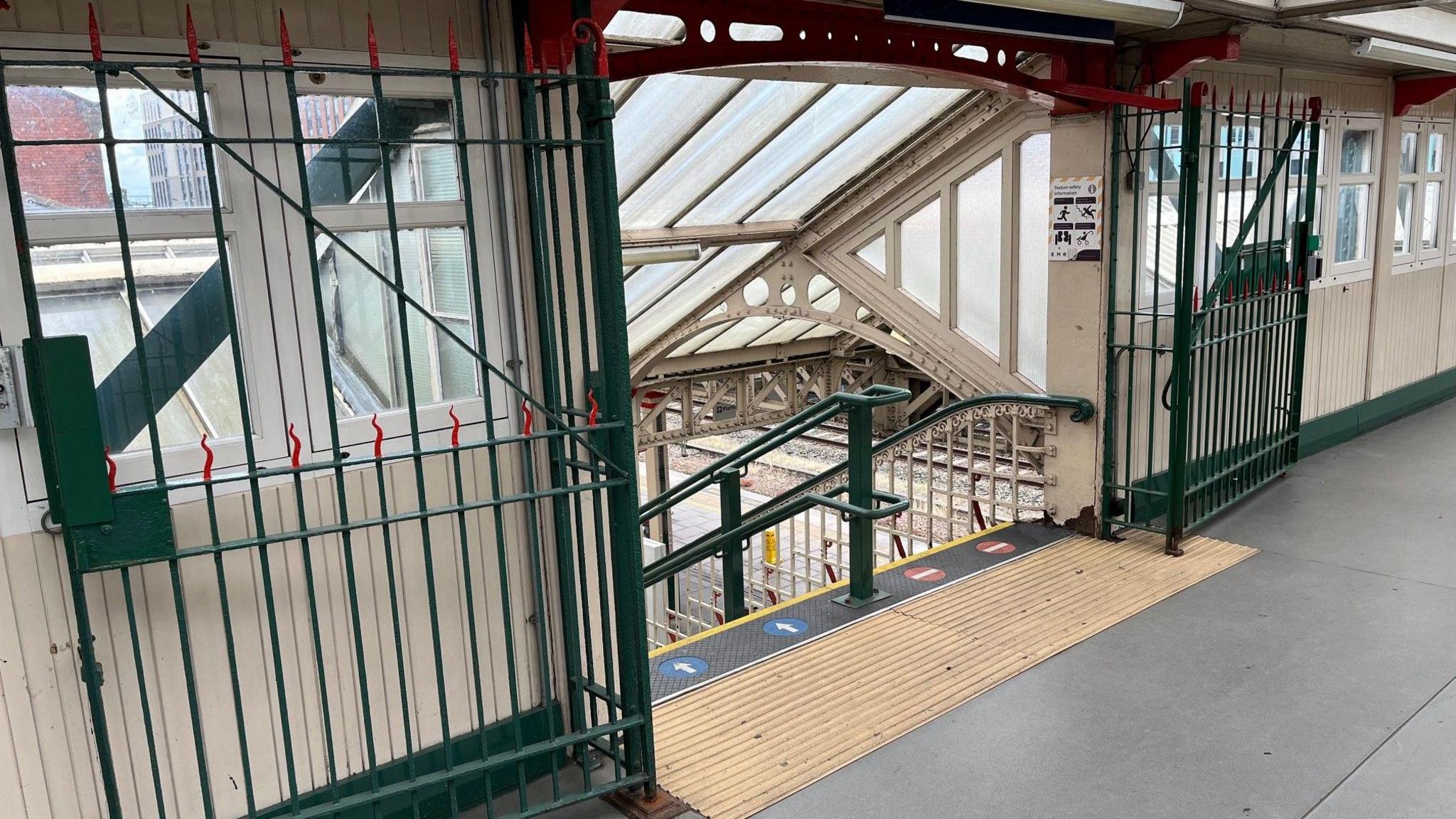
Large metal gates allow the stairs to be closed off from the bridge
The right of way was put over the bridge after an earlier crossing further down the tracks was demolished.
But this has left EMR with two seemingly opposing obligations - public passage and station security.
It said fare evasion from Nottingham could total £1.1m annually and barrier-free access from the bridge facilitated this.
Additionally, the firm said 62% of violent and anti-social behaviour incidents occurred between 19:00 and 06:00.
From 18 August, the time the stairs are fenced off will be extended from the current 23:00 to 05:00, to between 19:00 and 06:00.

EMR said it was working with the city council over future options for station access
Michael O'Callaghan-Staples, head of station experience for EMR, said the firm was always looking for longer-term fixes.
"It's a unique situation and this is the solution we have got available to us at the moment," he said.
"We will continue to work with stakeholders to work out a more rounded solution in the long-term."
He also admitted they had discussed the right of way itself with the city council.
"We have engaged with Nottingham City Council about the rerouting or closure of the public right of way," he added.
"But that is a complex process and we continue to work with our partners at Nottingham City Council to see what the opportunities are for that space."
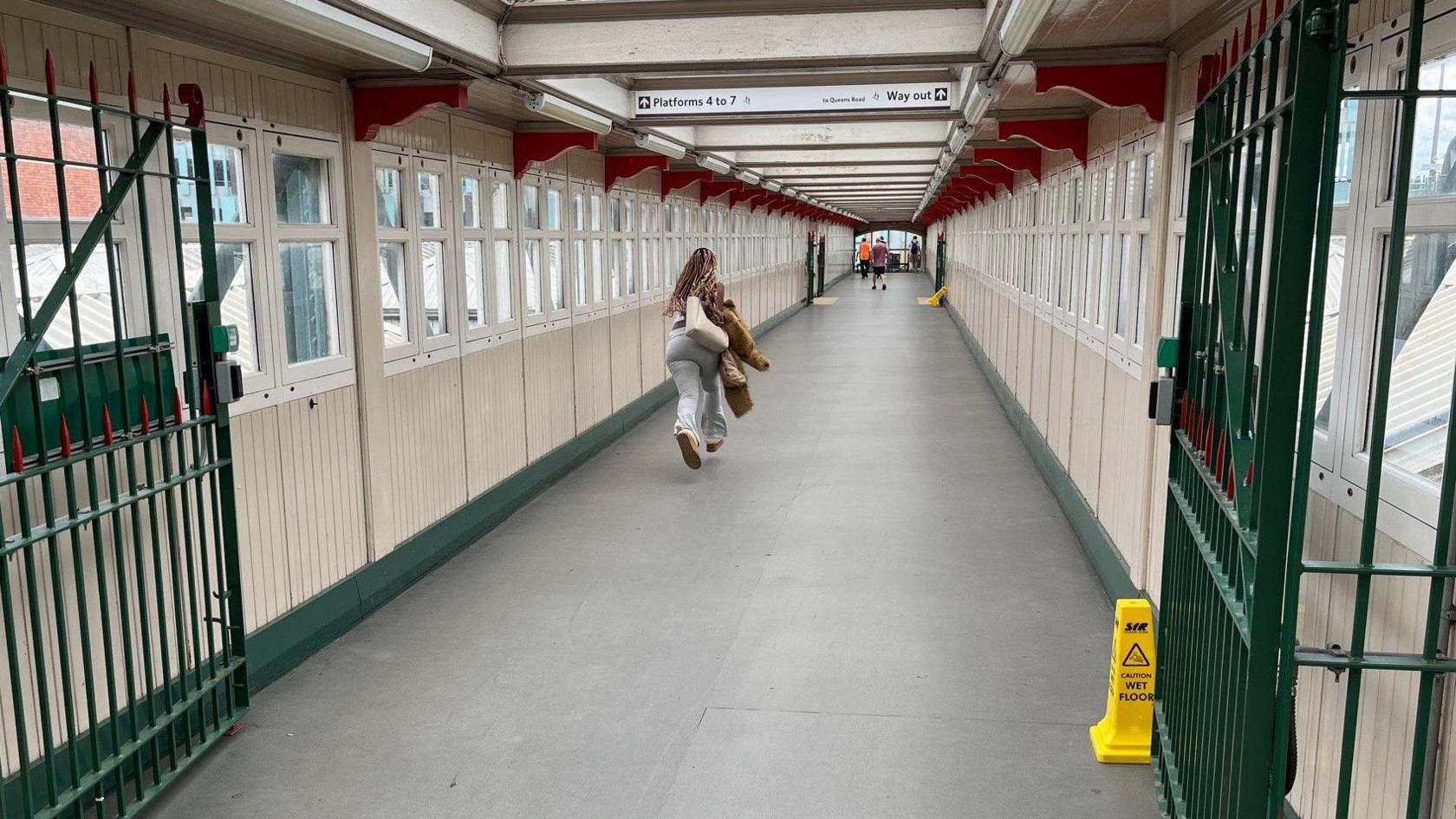
Rail Future said blocking the bridge could make the difference between missing or catching a train
Steve Jones, from Rail Future, which campaigns for passenger rights and rail improvements, recognised EMR was in a difficult situation.
He said: "It is rare in such a large station to have this right to public access.
"Nottingham station also has the issue that the main entrance is at the western end, but a lot of the train activity, especially with regional services, takes place at the eastern end.
"It's a long walk, which can be more than an inconvenience if you are changing trains and can't access the bridge.
"Those minutes can make the difference between catching your train or not, so it's a serious issue."
However, Mr Jones accepted fare evasion losses are "unsustainable".
He said: "Our solution, and one we have been calling for for some time, is there is a need for another bridge at Nottingham station, at the eastern end.
"This would be a big investment but if it avoids the £1.1m loss EMR claims, it has a good business case and it would, with lifts the current bridge lacks, be an enormous benefit to passengers."
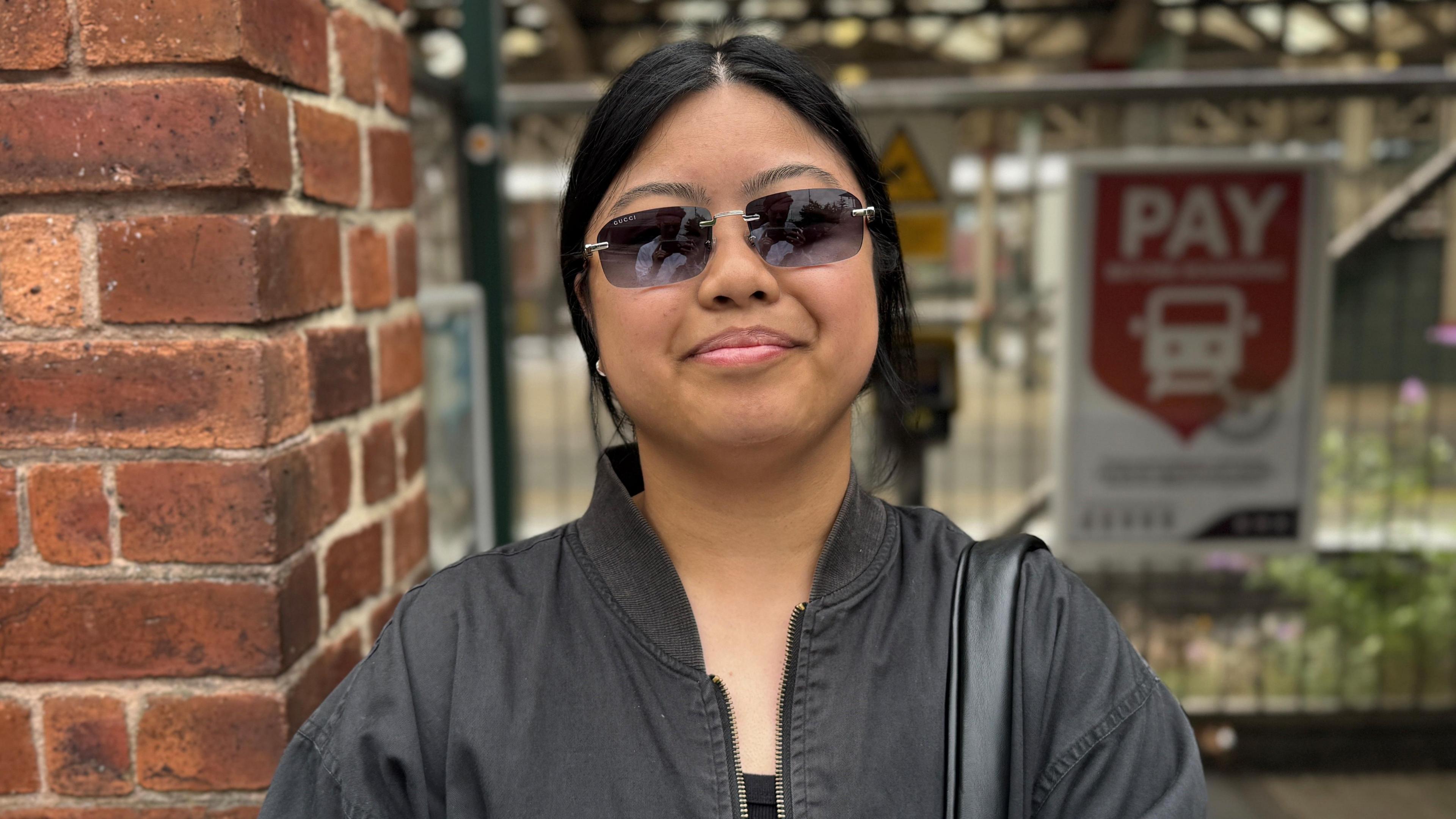
Martha Marigmen said the side entrance was better for catching taxis
Rail users also expressed reservations about the system.
Martha Marigmen said: "I almost exclusively use this bridge because it's far more convenient to get a taxi or just walk home.
"It takes a lot longer when you have to go through the main entrance and if you want to crack down on fare evasion, check the tickets on every train."
Carl Phillips added: "For the able-bodied it's not much of an issue but for those with pushchairs or mobility issues it's more of an inconvenience.
"Fare dodging is a problem but I think a lot of that comes down to the cost of public transport, which is ridiculous."
Nottingham City Council declined to comment on the issue.
Get in touch
Tell us which stories we should cover in Nottingham
Follow BBC Nottingham on Facebook, external, on X, external, or on Instagram, external. Send your story ideas to eastmidsnews@bbc.co.uk, external or via WhatsApp, external on 0808 100 2210.
Related topics
- Published30 January
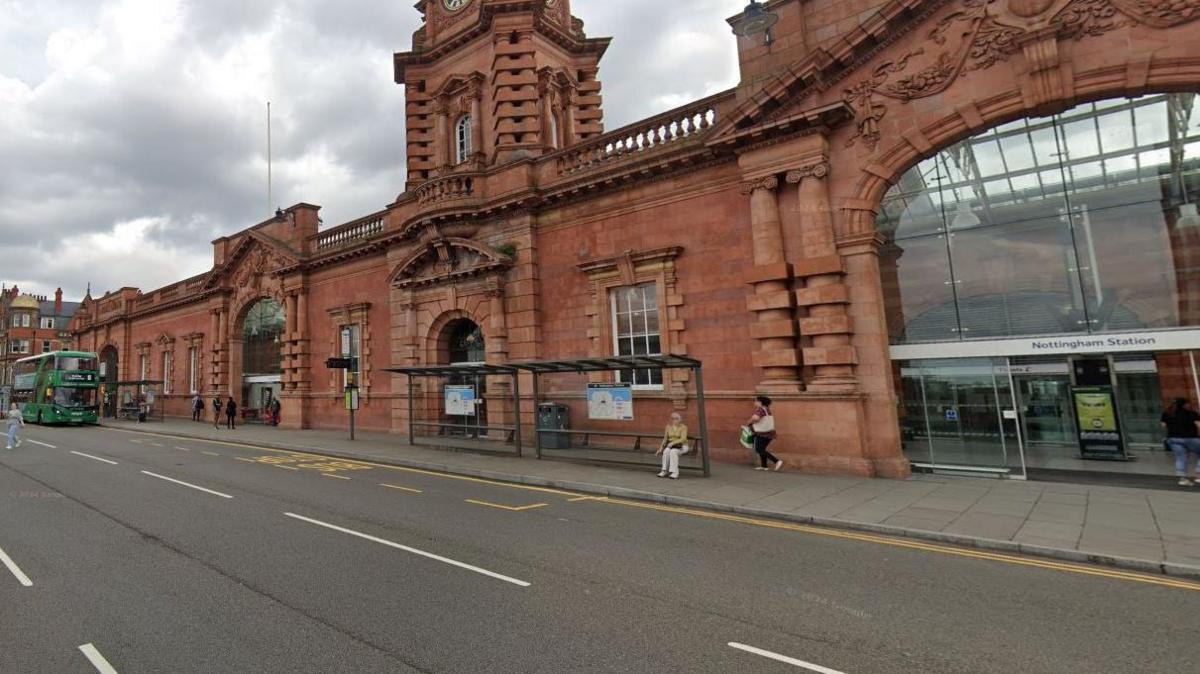
- Published20 August 2024
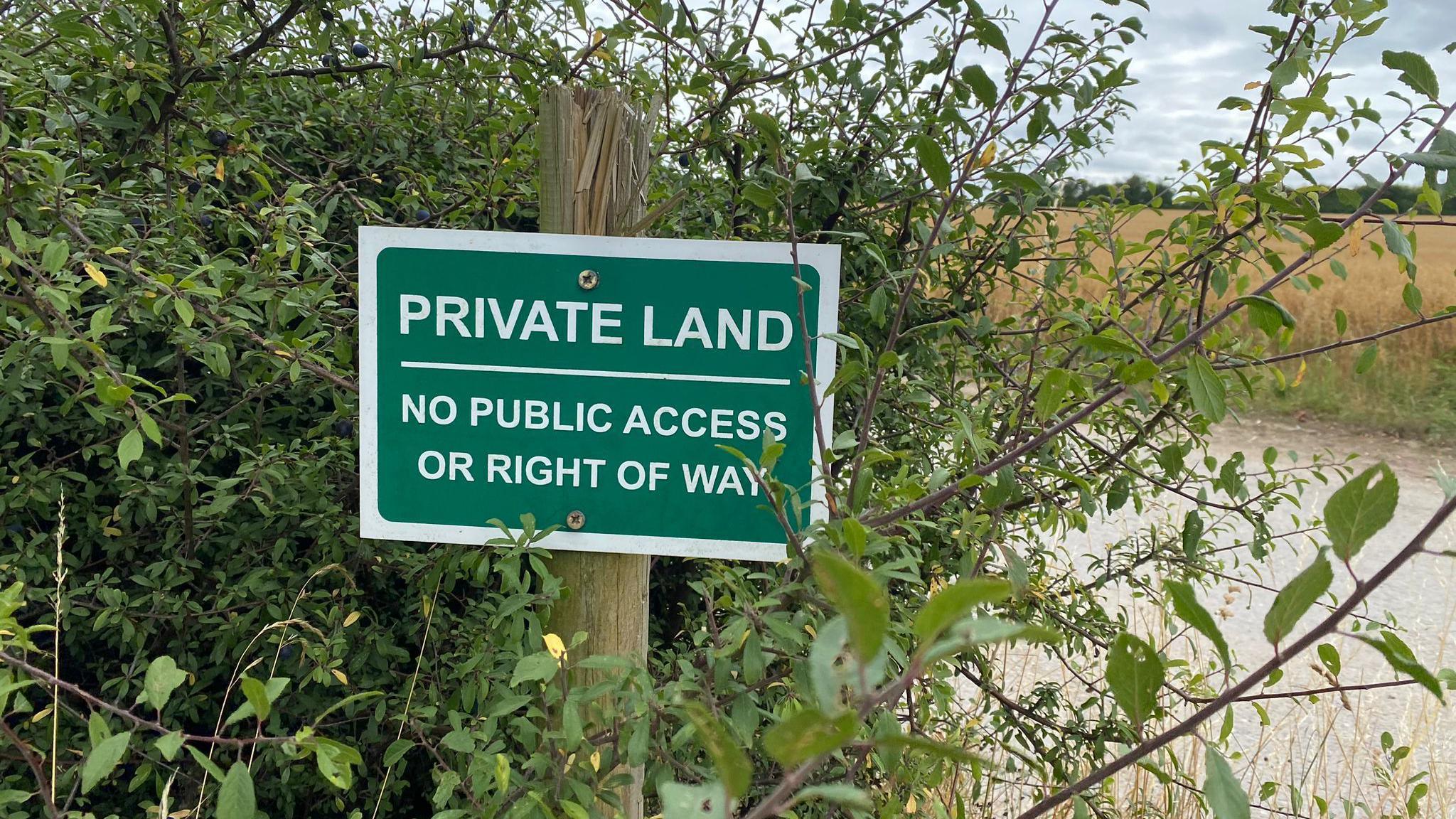
- Published12 January 2024
